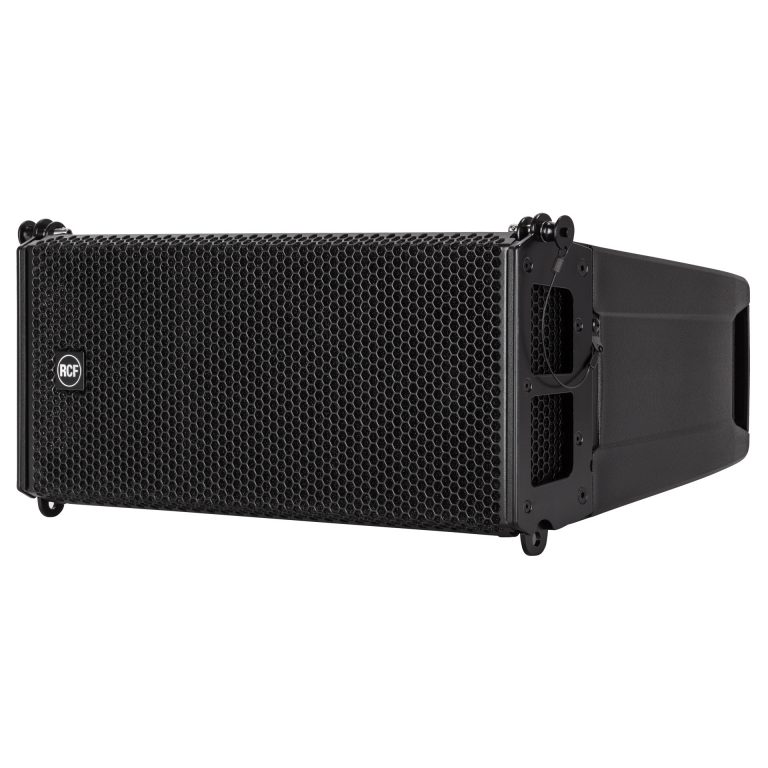
A Sound Company Field Tests a new compact line array system.
by John Moore.
My company, Trinity Productions (Tracy, CA), has been doing live sound and production since 2005, and we’ve always felt that “bigger is better” when it comes to loudspeakers for live production with the festivals and events that we serve. The challenge for us (well, me) is wrapping my head and ears around a loudspeaker system that touts some pretty impressive numbers while using small drivers and cabinets. Enter the RCF HDL 6-A.
Introduced last year, the HDL 6-A is a compact, active line array with two 6-inch woofers and an ND 340 compression driver (1.7-inch voice coil) mounted on a 100- x 10-degree (H x V) waveguide. These components are driven by a 2-channel class D amplifier with stated maximum (peak) power of 1,400 watts. Also onboard is DSP with RCF’s new FiRPHASE algorithms to manage crossover, phase correction, limiting and protection.
The amplifiers have a mechanical aluminum structure that lends stability during transportation and also helps with heat dissipation. The input board presents both XLR/jack balanced inputs, XLR output link, volume and a switchable EQ Mode.
The cabinet, which measures 9.3 x 18.5 x 15 inches (H x W x D) and weighs 25 pounds, is made of polypropylene composite material designed to dampen down vibrations. The integrated mechanics allow the building of J-shaped or spiral arrays. Foam backing inside the cabinet is intended to afford the transducers with added protection from dust.
Going into this evaluation process, I wasn’t totally skeptical; I think “cautious” would be the word. We’d heard the HDL 6-A in demo rooms where it was finely tweaked and EQ’d for the room and setup to give a pristine demo experience, but how would that translate to a mid-sized sound company doing events for 1,500 to 3,000 while also providing a “wow” listening experience for the crowd?
When we agreed to deploy HDL 6-A arrays for the main stage at the recent Blues and Brews instead of our usual PA for the event, I was concerned with how six boxes per side were going to supply acceptable coverage. Further, what would be the comparison with the previous system? The HDL 6-A proved quite impressive in both regards.
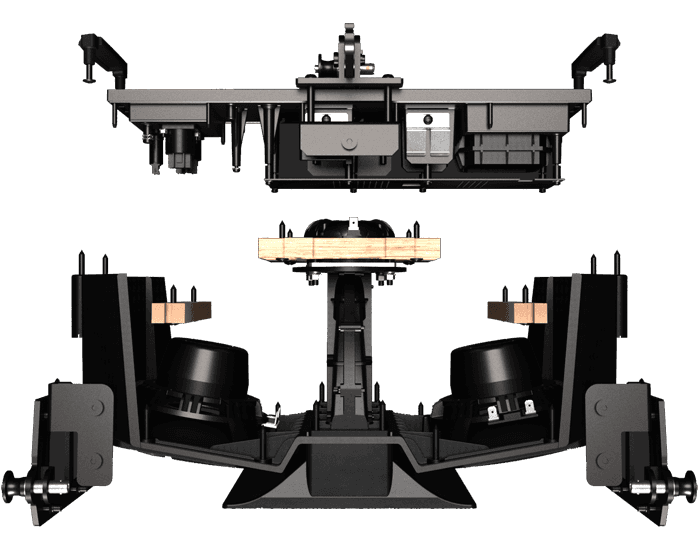
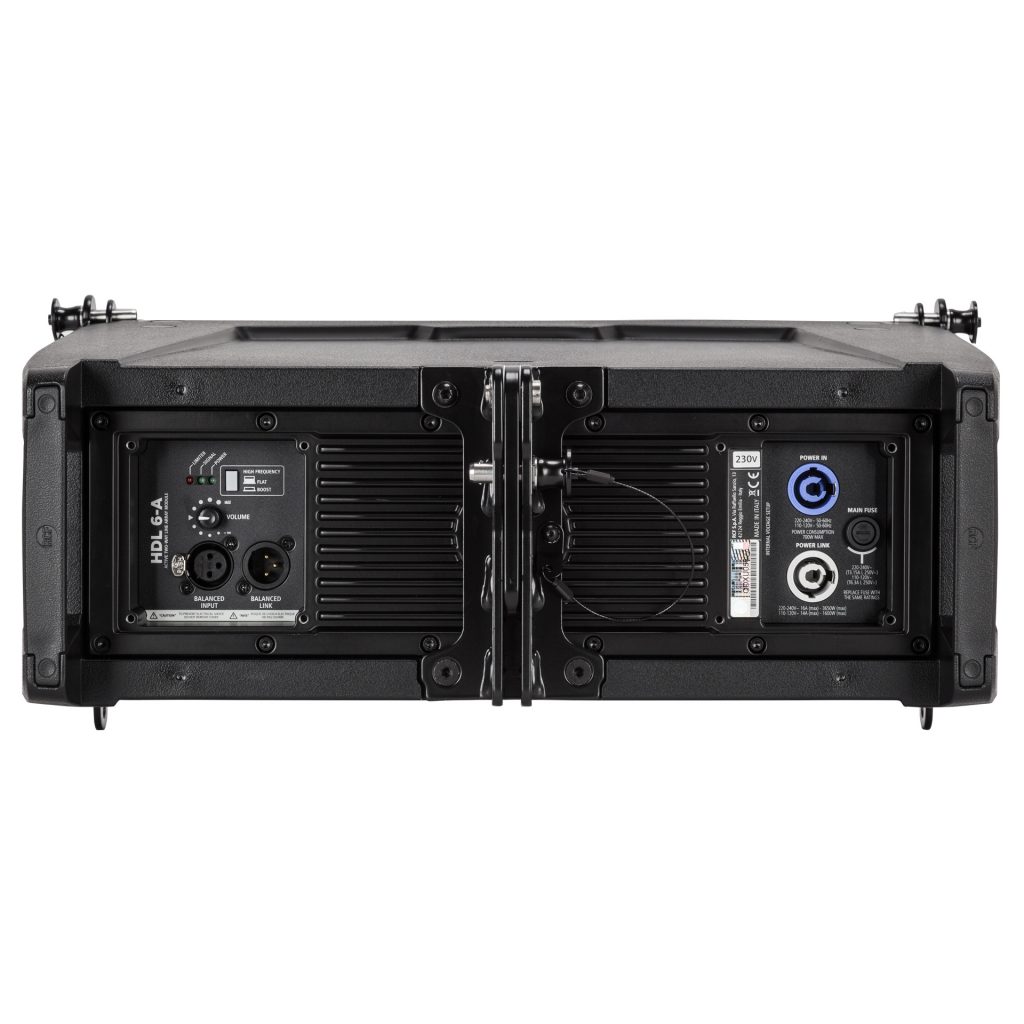
PUTTING IT TOGETHER
Let’s start with the setup and assembly of the arrays. For this evaluation, RCF also provided a lot of bells and whistles: a dozen HDL 6-A modules joined by two HDL 12-AS (single 12-inch) subwoofers, along with carts, fly bars, rain covers, shackles, pole mounts – the works.
The assembly process started with the carts/trollies; they come with wheels on and gear down, ready for action. Locking brakes made opening and setting the first box a breeze. The carts’ hardware aligns with the detents in the loudspeakers so that everything just falls into place. We stacked one module after another with ease, and the 3-point rigging system was as fast as any I’ve seen. Wham, 30 minutes and all of the boxes were open, two carts were down, and 12 loudspeakers were assembled into arrays with cables, ready to go.
The fly bar attached at the top with ease, and with five to six boxes per cart, it quite balanced for transport and not at all top-heavy. We also put the 12-inch sub on top just to see how the weight distribution went and was quite surprised that with a little assistance we would be able to put the entire rig with the 12-inch sub attached into the truck for transport, strapped ‘er down and ready to roll.
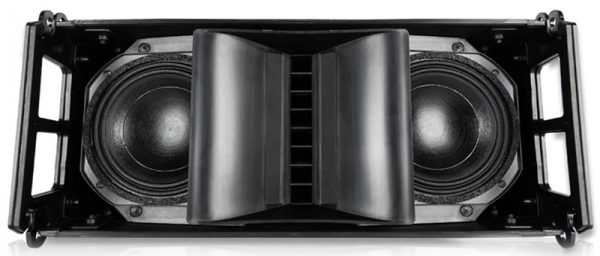
GOOD TO GO
Event day – how quick was that? This was the question I asked our A1 and A2. It took longer to get the lifts out of the truck than it did to deploy the arrays. Once set, the loudspeakers were rolled up to the Sumner lifts, shackles attached, and up they went. Yes, it was that easy. I don’t think the lifts even knew the loudspeakers were there; at least in cranking them up it almost felt like there was no load due to the light weight of the loudspeakers and overall rig. That is a big plus. We had determined the array deployment ahead of time utilizing RCF Easy Shape Designer software, based on the number of boxes and anticipated lift height (about 16 feet in the air). The software also gave us the initial pinning for the bottom boxes, and we did some final tweaking, including adjusting the splay angles of the bottom three boxes for some added down fill. Low-end duty was handled by our RCF TTS 26-A subs centered in a cardioid configuration.
The input and configuration setup was also a breeze – into the sub, crossover out at 110 Hz, off and running. In addition, the HDL 12-AS 12-inch subs provided an excellent transition from the TTS subs, and with the 110 Hz output, really allowed us to push the HDL 6-A arrays.
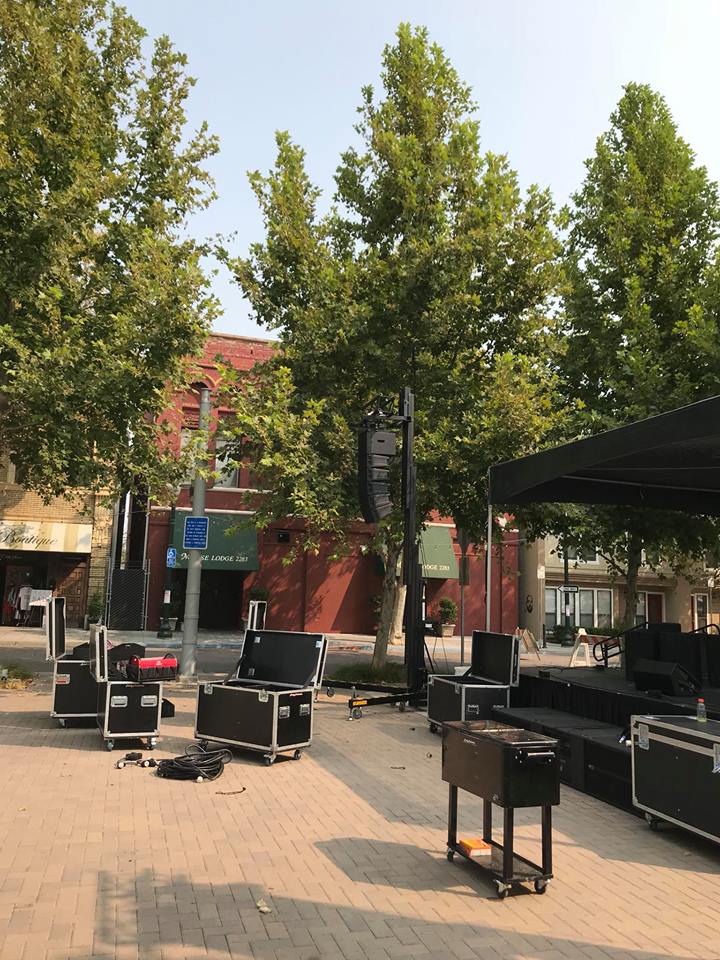
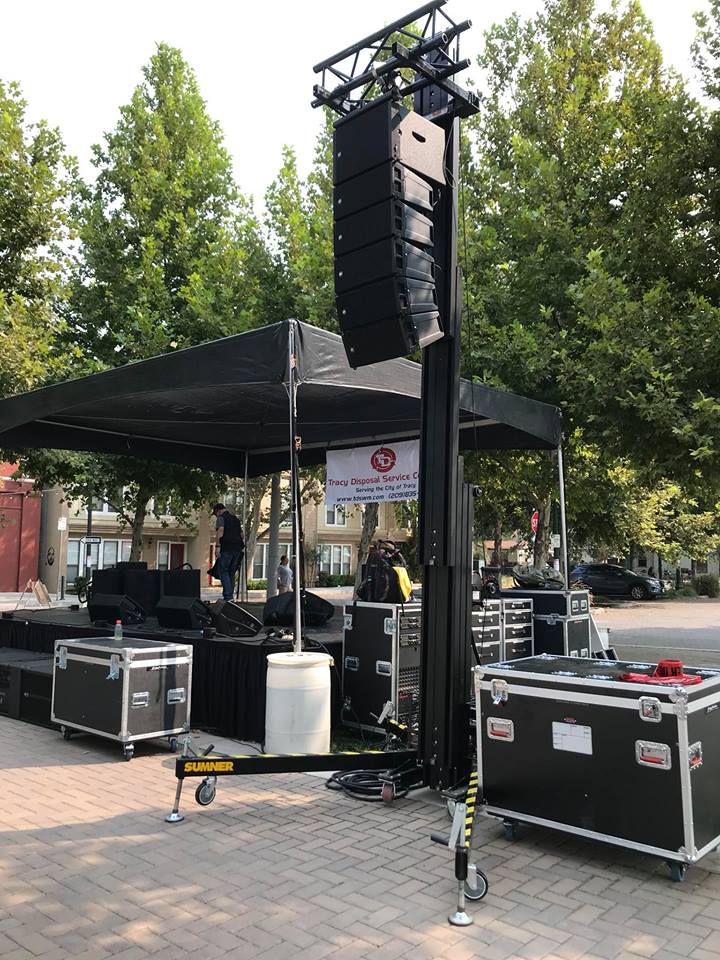
WORKING FOR A LIVING
“No freak’n way.” This was the first comment out of my mouth on firing up the rig. Connected to an Allen & Heath dLive console surface and a MixRack, this system dropped my jaw, particularly since we were outdoors. My A1 was on stage and had to stop what he was doing to listen; he also couldn’t believe the output and quality. The sound was smooth – I mean, smooth – most likely due to the 900 Hz crossover point for the main arrays as well as the FiRPHASE DSP. The SPL and overall output from the onboard amplifiers proved to be plenty in helping to deliver even coverage all the way to the rear of the audience area.
Blues and Brews kicked off at noon, going non-stop until 6 pm. Events don’t get any better, and the HDL 6-A arrays did not let us or the bands down all day long. No issues at all. Clean, smooth and fantastic coverage. I took the liberty of walking the venue during one of the sets, and from side to side and front to back, SPL was consistent with the sound quality.
The event went off without a hitch, and the compliments on the mixes and sound were made by event attendees throughout the day. My initial hesitation in using the HDL 6-A was completely nullified that day. Kudos to RCF and a design well done. If you’re looking for a small-format line array at an attractive price point with the ability to do anything from small to, well, large events, and do it with a miniscule footprint, the HDL 6-A comes up a true winner in my book. The ease of transport, setup and deployment was one of the fastest we’ve ever done, and on striking, the system came right down and bam, it was back in the truck. Don’t be fooled by the compact, lightweight nature of this system; it’s an audio beast.
U.S. MSRP: $2,199 per module LSI
John Moore is the founder and owner of Trinity Productions (trinityprosound.com, based in Tracy, CA)
